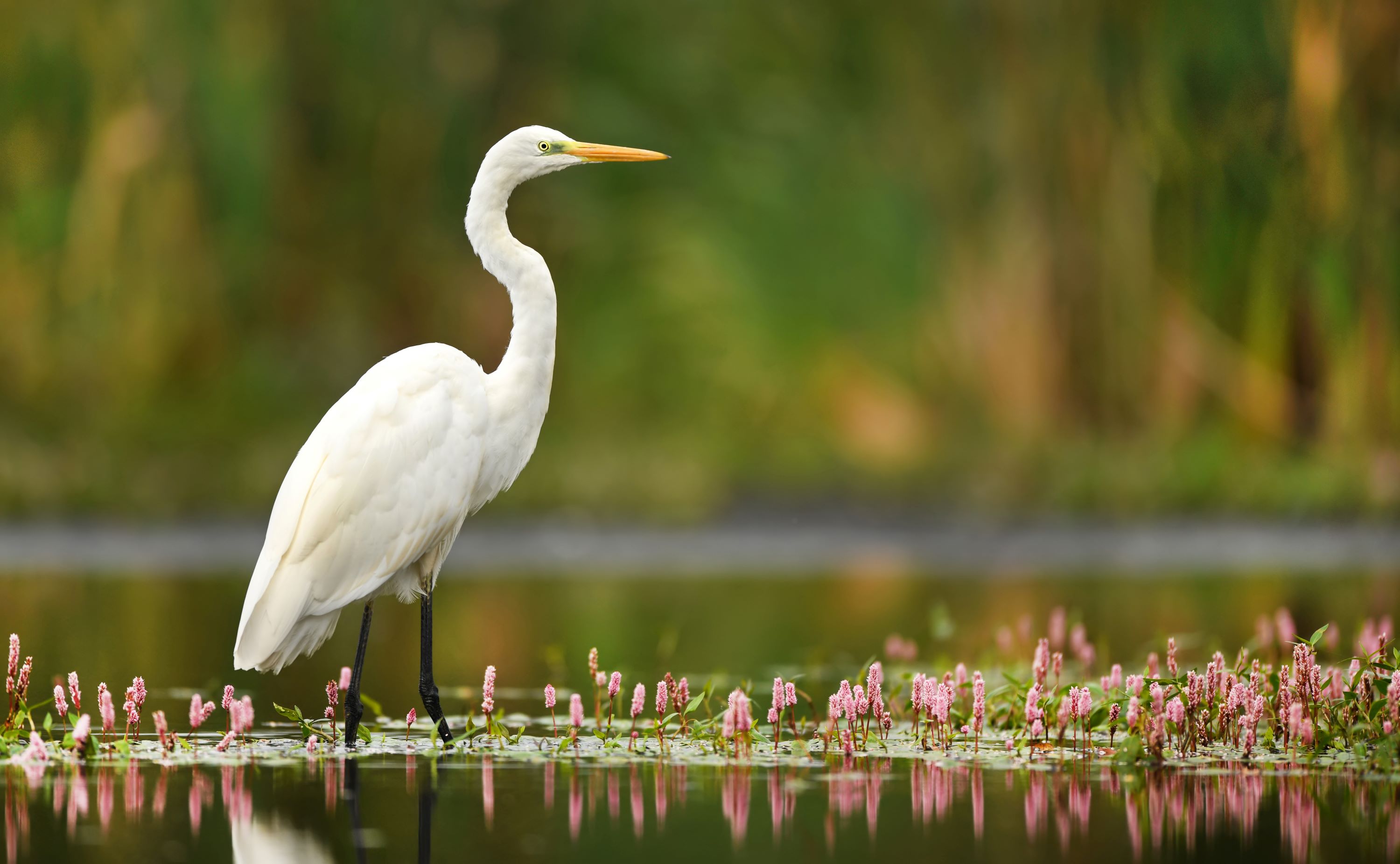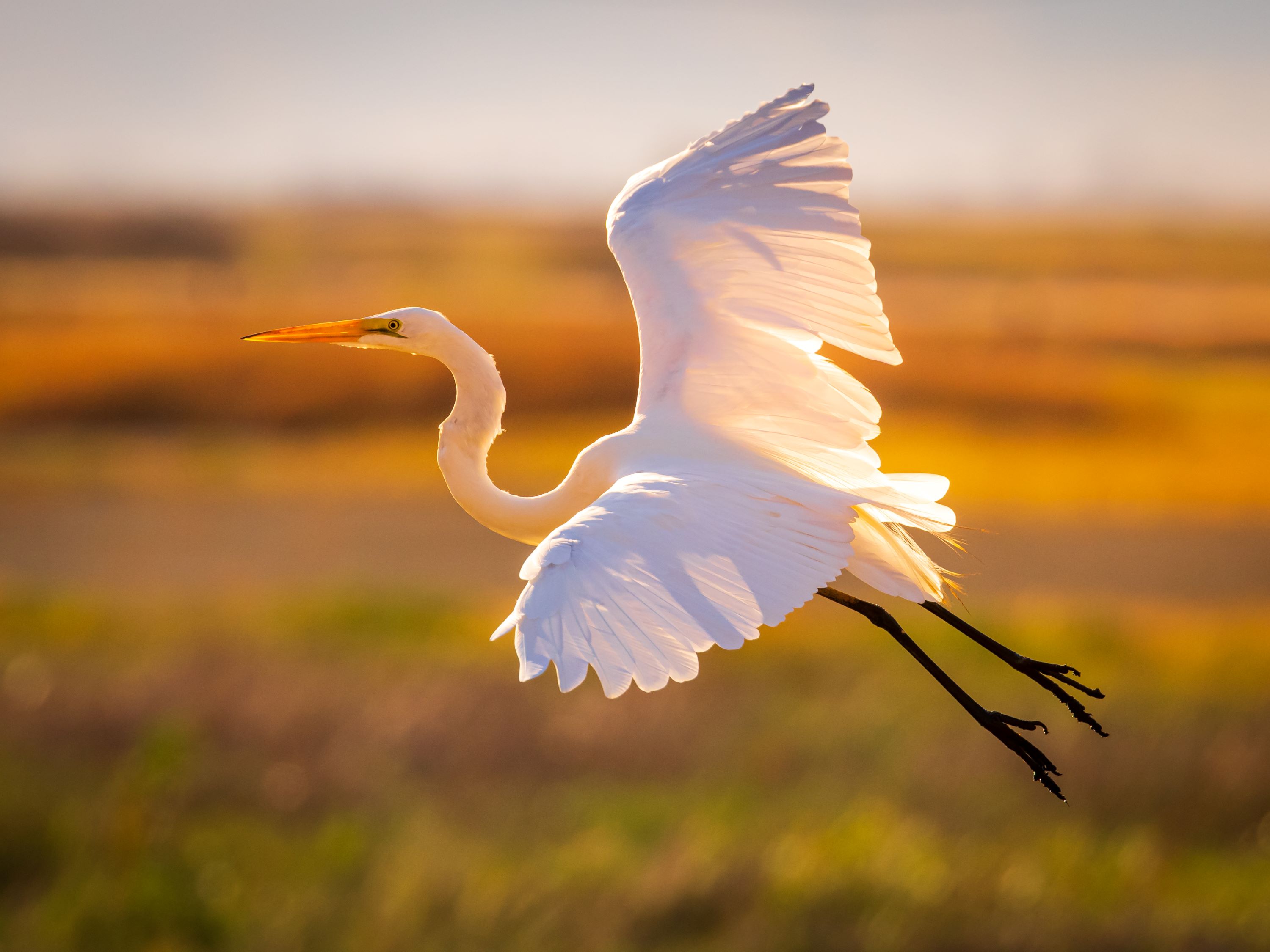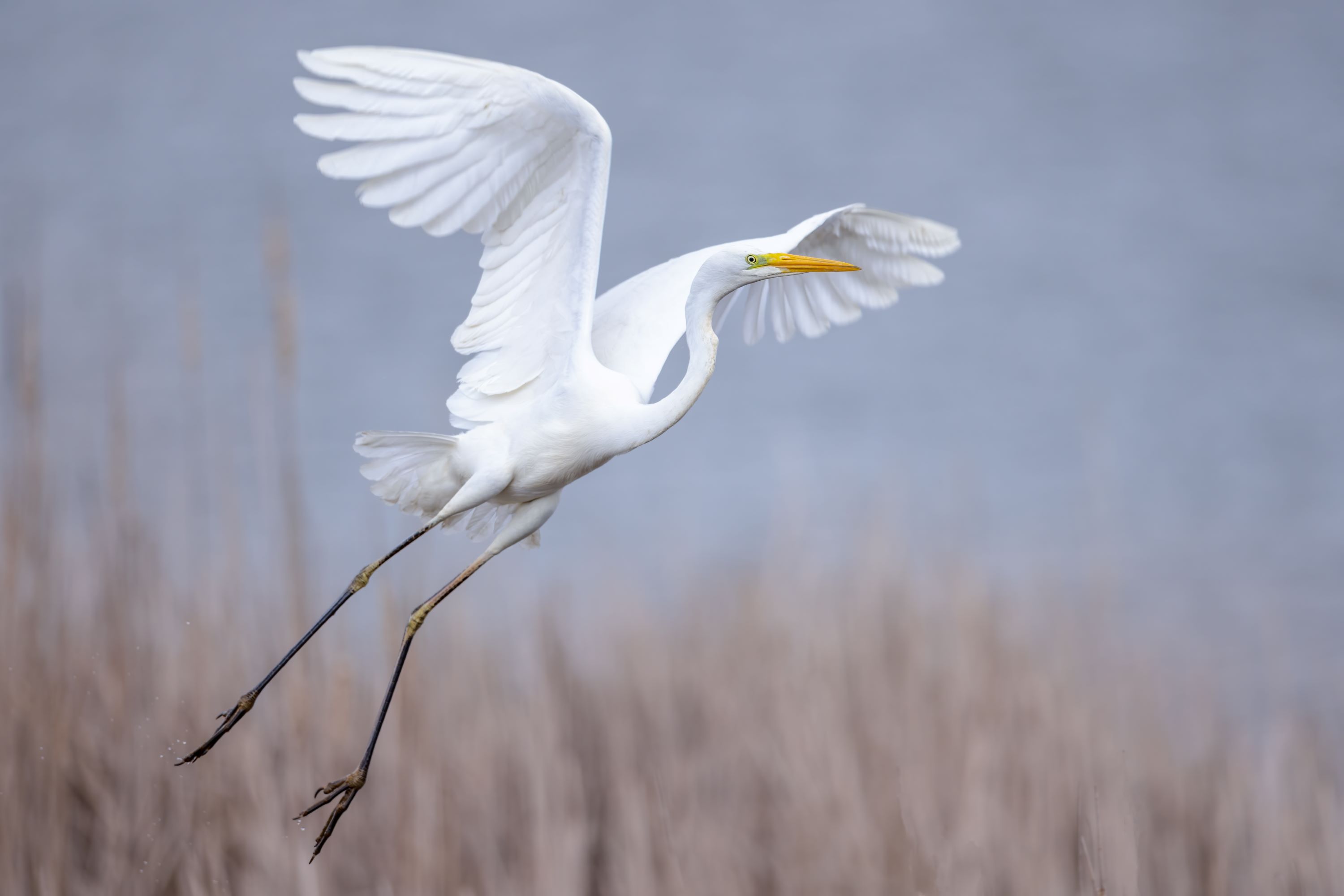
The Great Egret: The Elegant Wader of Wetlands
Introduction to the Great Egret
The Great Egret, known scientifically as Ardea alba, is a widely recognized and admired bird, belonging to the heron family Ardeidae. Celebrated for its striking white plumage and graceful stature, the Great Egret is a symbol of purity and elegance in many cultures and has played a significant role in bird conservation history.
Physical Description
The Great Egret is a large wading bird, standing up to 1 meter tall with an impressive wingspan that can reach over 1.5 meters. It boasts a slender, s-shaped neck and a long, sharp bill that is typically yellow in color, turning orange during the breeding season. The egret's plumage is entirely white, a stark contrast to its black legs and feet, creating a striking visual.
Habitat and Distribution
These egrets are highly adaptable and can be found in a variety of aquatic environments, including marshes, rivers, lakes, swamps, and coastal areas. Their global range extends across all continents except Antarctica, with populations in North and South America, Europe, Africa, Asia, and Australia. They are often seen in both freshwater and saltwater habitats.

Breeding and Nesting Habits
Great Egrets are social birds during the breeding season, often forming large colonies with other wading birds. They build their nests in trees or shrubs near water bodies, using sticks and twigs lined with softer materials. These colonies can become lively communities, filled with displays of courtship and the sounds of the breeding season.
Egg Laying and Incubation
A female Great Egret typically lays 3 to 4 pale green-blue eggs. Both parents share the duty of incubation, which lasts about 23 to 26 days. The high nests in trees help protect the eggs from ground predators.
Chick Rearing and Parental Care
The chicks are born with a covering of down and are dependent on their parents for food. Both parents feed the chicks by regurgitation. The young egrets grow quickly and are ready to fledge at about 6 to 7 weeks of age, though they may stay near the nest, relying on their parents for food and protection for some time.

Feeding Behavior
The Great Egret feeds mainly on fish, amphibians, reptiles, small mammals, and occasionally insects. They are patient hunters, often standing still in shallow water, waiting to spear their prey with their sharp bill. Their hunting technique involves slow walking or standing motionless, followed by a rapid strike.
Great Egrets in Utah
In Utah, the Great Egret can be spotted in suitable wetland habitats, particularly during the migration season. They are found in areas like the Bear River Migratory Bird Refuge and along the shores of the Great Salt Lake, adding to the state's rich bird diversity.
Conservation Status
Historically, Great Egrets faced significant threats from hunting, primarily for their feathers, which were in high demand for the fashion industry. This led to the decline in their populations in the early 20th century. However, with legal protection and conservation efforts, their numbers have rebounded. They are currently listed as Least Concern by the IUCN but remain vulnerable to habitat loss and environmental pollution.
Conclusion
The Great Egret, Ardea alba, with its statuesque appearance and graceful foraging habits, is an iconic bird of wetland habitats. Its presence across diverse geographic regions is a testament to its adaptability and resilience. In Utah, as in other parts of the world, the Great Egret enhances the natural beauty of the wetlands and serves as an important indicator of the health of these ecosystems. Observing these magnificent birds offers a glimpse into the rich and diverse world of avian life and highlights the importance of ongoing efforts to conserve and protect natural habitats.